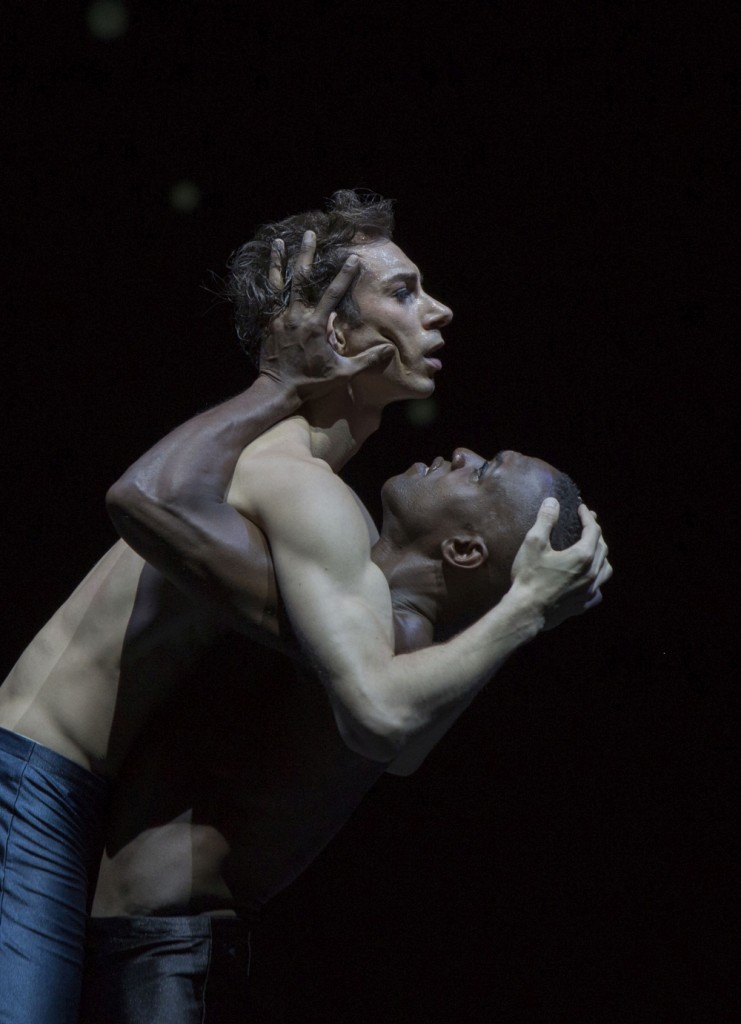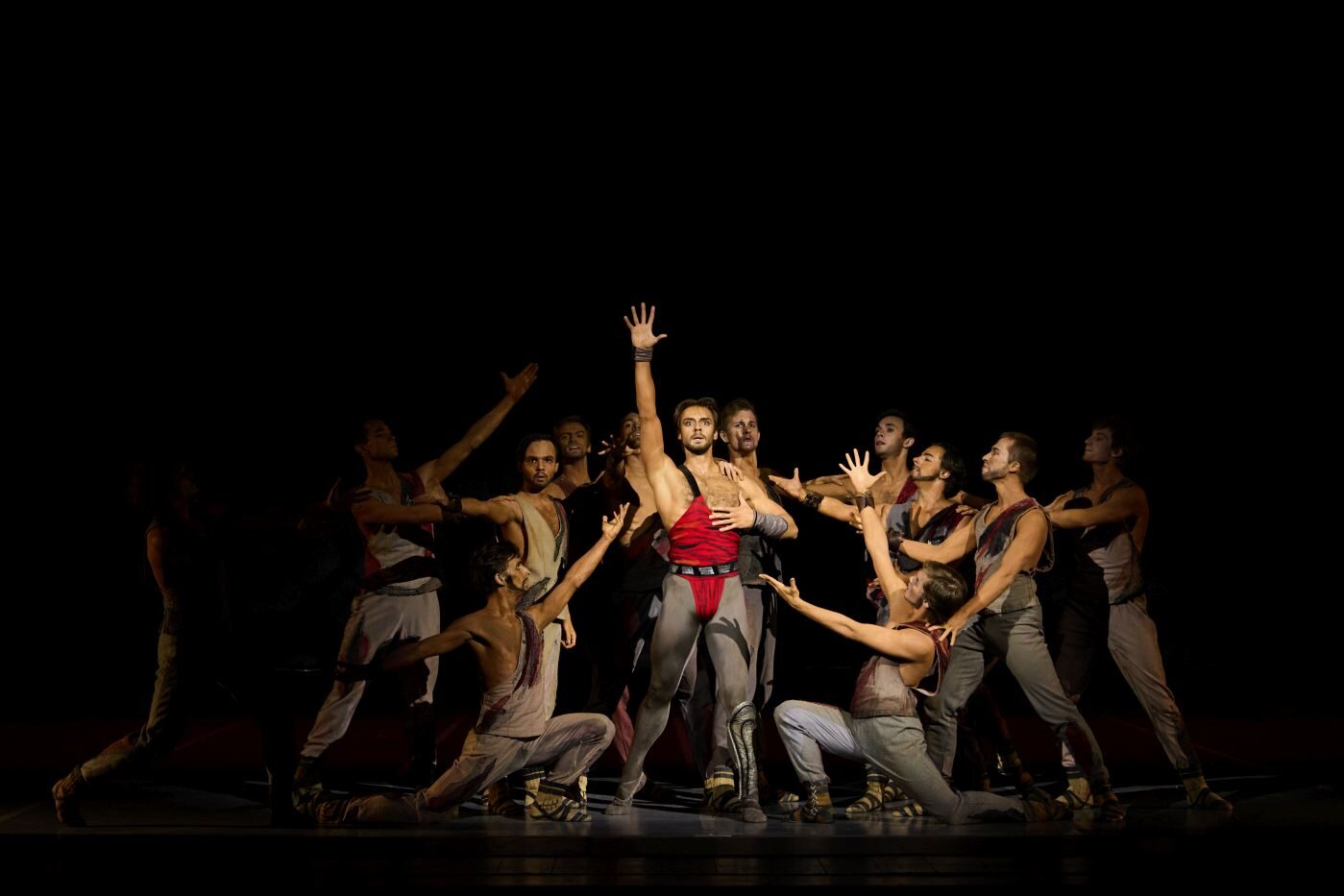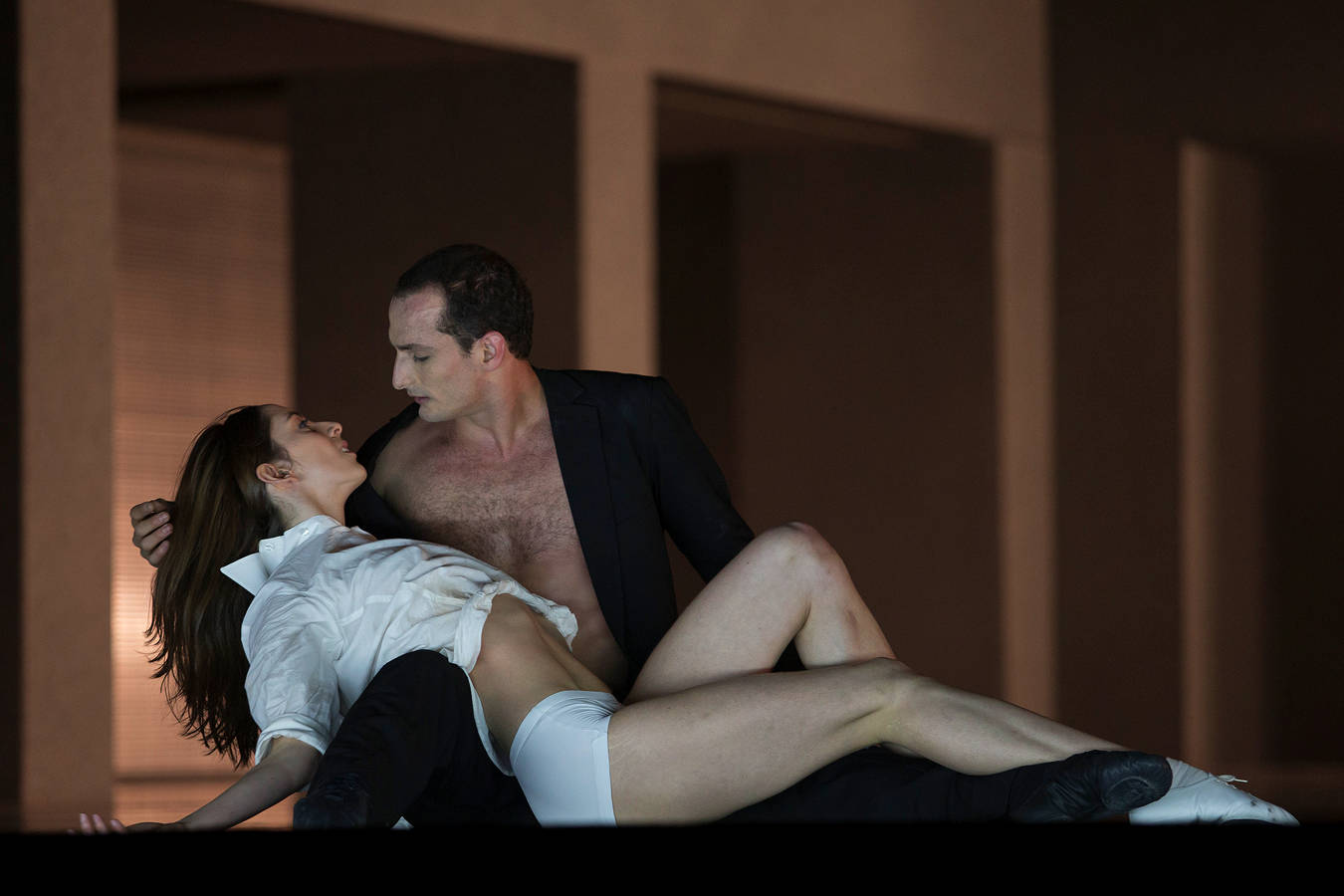Missing Diversity
“b.22” (“verwundert seyn – zu sehn”, “Moves”, “ein Wald, ein See”)
Ballett am Rhein
Opera House Düsseldorf
Düsseldorf, Germany
June 06, 2015
by Ilona Landgraf
Copyright © 2015 by Ilona Landgraf
 Martin Schläpfer, artistic director of the Ballett am Rhein, makes no effort racking his brain to find appealing titles for ballet evenings. He simply numbers them, this season arriving at “b.24”. I saw an earlier work, “b.22”, a triple bill made up of Jerome Robbins’s “Moves” as the centerpiece, framed by two works by Schläpfer himself: “verwundert seyn – zu sehn” and “a forest, a lake” (“ein Wald, ein See”).
Martin Schläpfer, artistic director of the Ballett am Rhein, makes no effort racking his brain to find appealing titles for ballet evenings. He simply numbers them, this season arriving at “b.24”. I saw an earlier work, “b.22”, a triple bill made up of Jerome Robbins’s “Moves” as the centerpiece, framed by two works by Schläpfer himself: “verwundert seyn – zu sehn” and “a forest, a lake” (“ein Wald, ein See”).
“Verwundert seyn – zu sehn” premiered in January this year at the Theater Duisburg, the company’s second home stage. Its title is a citation picked out of “Parerga and Paralipomena” (“Appendices and Omissions”), a collection of reflections by the German philosopher Arthur Schopenhauer. The two volumes gather, among others, Schopenhauer’s thoughts on philosophy, science, nature, color theory, suicide or metaphysic. “Verwundert seyn – zu sehn” is taken from a chapter dealing with the vanity of life. A serious, rather gloomy subject. To get the right perspective, one has to know that Schläpfer dedicated the piece to Bogdan Nicula, a long-time dancer in his ensemble. Being in his mid- thirties, the Rumanian developed amyotrophic lateral sclerosis last year. Within short time he was bound to the wheelchair and depended on artificial respiration. (more…)


